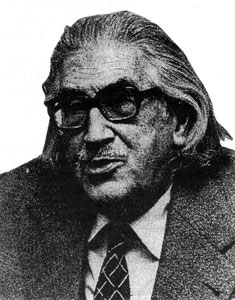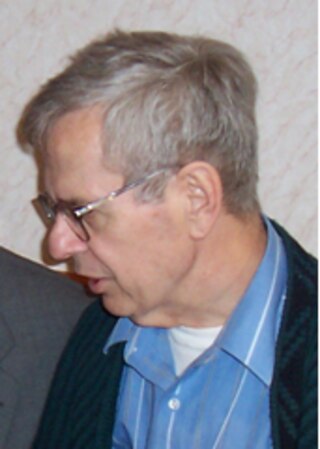Amharic is an Ethiopian Semitic language, which is a subgrouping within the Semitic branch of the Afroasiatic languages. It is spoken as a first language by the Amharas, and also serves as a lingua franca for all other populations residing in major cities and towns of Ethiopia.

Francis Brinkley was an Anglo-Irish newspaper owner, editor and scholar who resided in Meiji period Japan for over 40 years, where he was the author of numerous books on Japanese culture, art and architecture and an English-Japanese Dictionary. He was also known as Frank Brinkley or as Captain Francis Brinkley and was the great uncle of Cyril Connolly.

The Israeli population is linguistically and culturally diverse. Hebrew is the country's official language, and almost the entire population speaks it either as native speakers or proficiently as a second language. Its standard form, known as Modern Hebrew, is the main medium of life in Israel. Arabic is used mainly by Israel's Arab minority which comprises about one-fifth of the population. Arabic has a special status under Israeli law.

Haddis Alemayehu was an Ethiopian novelist and Foreign Minister of Ethiopia. His Amharic novel Love to the Grave is considered a classic of modern Ethiopian literature.

Afäwarq Gäbrä Iyäsus was an Ethiopian writer, who wrote the first novel in Amharic, Ləbb Wälläd Tarik, . Bahru Zewde writes, "Few people before or after him have demonstrated such superb mastery of the Amharic language. Few have ventured with such ingenuity into the hidden recesses of that language to come out with a wealth of vocabulary and idiom one scarcely thought the language possessed. Afäwarq is nonetheless a controversial figure for having supported the Italians during both the First and Second Italo-Ethiopian Wars.
Sahle Sellassie Berhane Mariam is an Ethiopian novelist and translator.

Blatten Geta Heruy Welde Sellase was a Foreign Minister of Ethiopia and a writer in Amharic. Bahru Zewde observes that his career "stands out as the great success story ... of the early twentieth-century intellectuals," then continues, "His prolific literary record, his influence with Tafari-Hayla-Sellase and his ascent in the bureaucratic hierarchy were all characterized by an unchequered progression. Edward Ullendorff concurs in this evaluation, describing his oeuvre as "a considerable and distinguished literary output."

The mass media in Ethiopia consist of radio, television and the Internet, which remain under the control of the Ethiopian government, as well as private newspapers and magazines. Ten radio broadcast stations, eight AM and two shortwave, are licensed to operate in Ethiopia. The major radio broadcasting stations include Radio Fana a private station, Radio Voice of One Free Ethiopia, and the Voice of the Revolution of Tigray. The only terrestrial (broadcast) television networks are government owned and include EBC and other regional stations. In keeping with government policy, radio broadcasts occur in a variety of languages including Amharic, Afaan Oromo, Tigrigna, and more. There are also many video sharing websites which are a popular way of getting information as well as entertainment in Ethiopia.

Yona Bogale was an Ethiopian Jewish educator and public figure, who served as the director of the Beta Israel education network in Ethiopia and worked vigorously for the immigration of Ethiopian Jews to Israel. He led the efforts to improve the living conditions of the Beta Israel in Ethiopia by expanding education, providing medical facilities, increasing agricultural production and promoting religious freedom. His persistence in the face of opposition enabled many thousands of his people to fulfill their lifelong dream of Aliyah, or return to the homeland of Israel.
Roy Clive Abraham was a key figure in African language scholarship during the twentieth century. He worked for over thirty years on a wide range of disparate languages.

Jean Herbert was one of the first generation of interpreters for the United Nations organization. He was a former chief interpreter of the United Nations interpretation service in New York City.

Marvin Lionel Bender was an American linguist.
Although Christianity became the state religion of Ethiopia in the 4th century, and the Bible was first translated into Ge'ez at about that time, only in the last two centuries have there appeared translations of the Bible into Amharic.
David Appleyard is a British academic and an specialist in Ethiopian languages and linguistics.

Ethiopia–Japan relations are the international relations between Ethiopia and Japan. Before the Second Italo-Ethiopian War the Japanese worked towards economic goals with the Ethiopians in attempts to expand Japan's trade with the rest of the world.

Abe Gubegna was an Ethiopian writer. His name is sometimes spelled "Abbé" or "Abbie". He published eight novels, five plays, three collections of poetry, and translated several biographies of world leaders as well as other works. Abe mainly wrote in Amharic, but two of his books were written in English.
Karl Wilhelm Isenberg, spelt or known by names Carl Wilhelm Isenberg or Charles William Isenberg or C. W. Isenberg or Carl W. Isenberg or Charles Isenberg, was a German Church Missionary Society missionary and linguist to East Africa and Western India.
Amsalu Aklilu was a distinguished lexicographer of Amharic and a language professor at Addis Ababa University, a major figure in Ethiopian studies. He was born in Dessie, Wällo; attended a local church school and later attended and graduated from Holy Trinity Secondary School, in Addis Ababa. He obtained his bachelor's degree from Cairo University and his doctorate from the University of Tübingen in German.

Kebede Mikael was an Ethiopian-born author of both fiction and non-fiction literature. He is widely regarded as one of the most prolific and versatile intellectuals of modern Ethiopia – he was a poet, playwright, essayist, translator, historian, novelist, philosopher, journalist, and government officer belonging to the Shewa Amhara nobility and member of the Solomonic dynasty. He has produced about ninety published works in several languages, some of which have been translated into foreign languages, and have greatly influenced twentieth-century Ethiopian literature and intellectual thought. He has received ample recognition domestically and internationally, including an Honorary Doctorate from Addis Ababa University. He is well known as one of the mid-twentieth-century Japanizing Ethiopian intellectuals.
Daniachew Worku was an Ethiopian writer whose works include novels, plays and short stories. He wrote in both Amharic and English.











